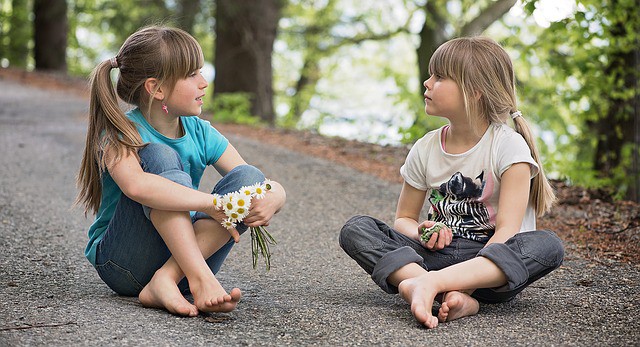by Inpatient Care Project Manager, Nic Higham.
While mental health issues are gaining more awareness than ever, and the knowledge they affect many of us is gradually becoming commonplace, there are still some pervasive stigmas that make it hard for young people to ask for help. If they think they may be experiencing something to do with mental health, they may be scared to say anything for fear of bullying or abuse from peers.
Sadly, this causes sufferers to try to find ways to hide away even more. They may also feel like they are the only ones who are going through this stuff, but they most certainly aren’t, and they need to know this. Likewise, one of the biggest misconceptions about mental ill health is that it’s a sign of weakness or laziness. On top of all this, many young people don’t understand what they’re going through when early symptoms take effect, because they don’t know what to watch out for. Despite these fears, young people tend to be most comfortable discussing and sharing concerns with their friends, once they have the courage to confide in them. Nowadays, young people are blessed with online social networking sites, and while they have their dangers and limitations, young people are using them to connect with others (both friends and professionals) about their struggles.
Young people are up against the same mental health stigma that adults face – combined with the extra misunderstanding that mental illness isn’t as common in child and teenhood as it is in adults. It’s so important for people to know, especially young people who are going through tough times, that mental illness is real, and there’s nothing to be embarrassed about. I find it amazingly brave when a young person speaks to a friend, parent, carer or professional about their struggles with mental health. The kind of response they get will most likely impact their chances of reaching out again in the future; interactions can either be a springboard or a barrier. But it’s great that affected individuals and families are starting to speak out and share stories in their communities. Opening up the conversation about our mental health as a society is one of the best ways we can collectively put a stop to some of the lingering social and cultural stigmas.
In a recent blog, Nina Martynchyk, someone who has first-hand experience of adolescent depression, anxiety and anorexia, reflects:
I can say from a personal point of view that assuming those with mental illness are just ‘acting out’ and not really suffering is as ridiculous as saying to someone with a broken leg ‘just walk on it, I’m sure it won’t be that painful!’. We would never say that to somebody with a broken leg, so what is so superior about a leg that it’s allowed to be ill and the brain isn’t? There’s still a long way to go until society reaches a level of understanding and acceptance of mental health problems that’s on par with physical health.
[Source]
Thankfully, these stigmas have decreased somewhat over the last few years, and young people are feeling a bit better about reaching out, but there’s still a lot of work to be done. It will take everyone’s commitment to continue to lend shoulders and ears when people are struggling, consider our own attitudes to mental health, raise societal awareness of the issues and gain more understanding. We can all do our bit to encourage positive action and make a difference. Taking one constructive step at a time will help. One of the biggest problems is the stigma that exists through stereotypes, slang and discrimination, so we can do our best not to use unhelpful language. We can find ways to offer support and comfort, so those affected know they’re not alone. There’s absolutely no valid reason why mental health should be a taboo, or for anyone to feel embarrassed. We all exist on the mental health spectrum and those with diagnoses need not see themselves as being ultimately defined by it; it’s just one aspect of who they are, as a unique, fully rounded person.
Staggeringly, as a society, we’re only just beginning to appreciate the pressures under which children and young people are placed, even without a diagnosed mental health problem. Mental illness often starts during the teenage years, sometimes even before the age of 14. So understanding that it’s a very real issue for young people, and learning to recognise the signs, are both critical to improving mental health.
Understandably, parents and carers may have the view that mental illness might reflect badly on them as parents, or that a behavioural disorder will label their child as “problematic” or “disturbed,” leading to punitive treatment in school.
We at Star Wards, a project which works collaboratively with the full range of mental health wards to improve inpatients’ experiences and outcomes, wholeheartedly support initiatives that build capacity to recognise and address young people’s mental health. There’s a lot of really fantastic work happening beyond hospital settings, too. Schools are creating environments that promote and protect the mental health and wellbeing of students. They’re doing their best to introduce special programmes to help open up dialogue, offer emotional support and impart feel-good skills. These will improve students’ understanding of mental health and the associated issues, and teach them how to cope with stressful situations and talk to friends who are feeling vulnerable. Such proactive steps should be applauded, but much more support needs to be given to teachers and education staff from other agencies, because schools can’t do it alone, especially given the growing pressure they’re under academically and sometimes financially.
There will always be young people and families with needs that are so complex they need admitting to a highly specialist Child and Adolescent Mental Health (CAMHS) inpatient unit. As with other staff groups, most CAMHS ward staff are impressively creative and compassionate and CAMHS wards throughout the country provide a rich assortment of therapeutic, educational, social and clinical interventions. Being an inpatient offers an opportunity for young people to attain new skills and achievements, build up their muscles of resilience, discover hope, feel validated and safe, be heard and involved, do something fun, enjoyable and constructive, express themselves, make new friends, and grow and move forward in their lives.
CAMHeleon.org is a new CAMHS ward best practice website which has been developed by Star Wards. The site focuses on the things that really make a positive difference to young inpatients, identifying small changes that have a big impact. Its overall objective is to support ward staff in enabling young people to make the most of this time away from their usual lives. CAMHeleon.org is informed and inspired by research into many aspects of young people’s wellbeing and how CAMHS wards can best provide and support these collaboratively. The following extracts are from the ‘Understanding’ section of the site:
Primarily, young people need to understand themselves and be able to make the choices that are most compatible with their self-knowledge, in order to maximise their potential, their future happiness and see themselves as worthwhile and valuable. What’s required is to build a relationship with each young person and create a sense of tangible belonging, and understanding is the impetus for this. Being caring means being mindful of a young person’s needs and trying to see their world through their eyes, and appreciating how holistic it is. Their mental health needs are part of them, not the sum of their life. Strong collaborations with young people are what achieves this.
Young people need to feel able to face their difficulties in order to learn how to understand them, work through them and move forward in their lives. Such problems are no doubt worrying, but not completely destructive if they can tap into their skills and available support to manage them, and move beyond them.
Understanding and trust in the ward setting are dynamic; everyone involved in the young person’s care needs a good grasp of what’s happening and what the best way forward is – including the young person of course. From the start of a young person’s admission, staff aim to gain understanding around their current emotional world, which leads on to the individual tailoring of treatments and interventions. Being understood feels great and young people thrive when they’re shown real understanding and acknowledgement.
[Source]
As a society, our inherited stigmatic and avoidant mindset has meant that mental illness has been disproportionally overlooked and denied for too long, adding to the stigma and people’s sense of isolation. Furthermore, unlike most physical health problems, mental health issues are actually exacerbated by stigma. This is a vicious cycle we can break out of. We are breaking out of it. Ultimately, this fresh outlook will prevent young people’s concerns or issues from becoming major problems and the awful isolation and despair that comes with them. Access to healthcare services and early intervention are unequivocally critical.
Mental wellness and recovery are not only possible, they are expected when a young person is in touch with suitable treatment and caring support. Mental health touches all of us; whether we experience mental illness directly, or interact with someone who lives with its effects. Stigma always derives from ignorance and fear so let’s continue to educate ourselves and encourage even more understanding and mindfulness.
About the author: Nic Higham is Inpatient Care Project Manager at www.CAMHeleon.org, a new website of achievable positive experiences that young mental health inpatients can have while in hospital, ways they may take advantage of these, and how professionals can offer support.
You can follow Nic @starwards or visit the website at www.camheleon.org.
image by Pezibear under CC0 license




